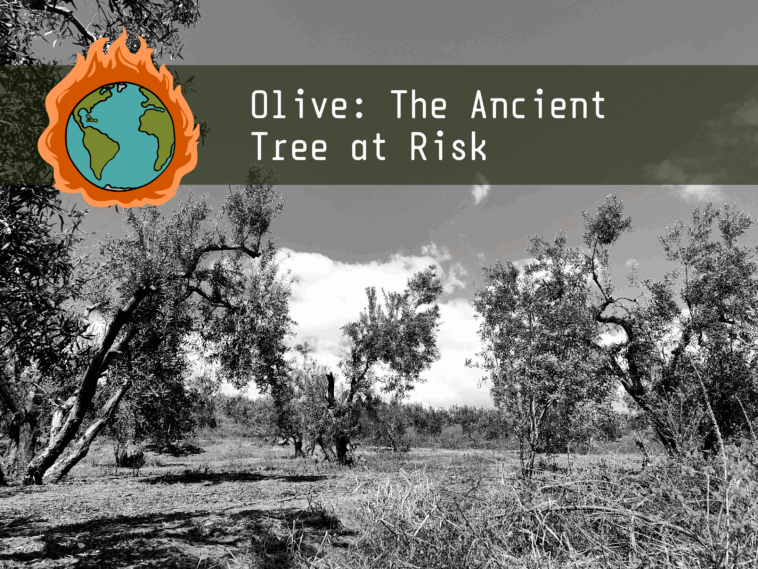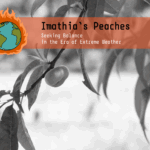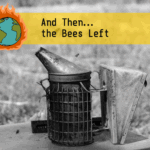Olynthos, an ancient city in Chalkidiki built on a fertile plain at the head of the Toroni Gulf, is among the earliest olive-producing areas of Greece for table olives and early-harvest olive oil. From the 1970s onward, the “Chondroelia” variety was developed there, cultivated in linear irrigated orchards. About 400 families in the wider area work with the Chalkidiki green olive, while olive groves in the prefecture cover more than 300,000 stremmas. The olive product has reached the entire world and has also received recognition as a PDO.
For some years now, a new cooperative of organic farmers, “Biolivia – Agricultural Cooperative of Organic Olive Producers,” has been trying to breathe life back into the old cooperative, which is under liquidation, but above all to introduce and apply a different understanding of cultivation and of our relationship with nature.
In an olive grove in Olynthos, we met with Dimitris Evangelinos, the cooperative’s president, in order to understand the serious impacts of the climate crisis on the olive and the effort to mitigate them through different cultivation practices and an approach centered on soil quality.
“In recent years, from 2013 onward, we had the first signs. However, the multicellular storm of July 2019 destroyed everything, we’re talking about a terrible hailstorm. In 2021 we had the spring frost. It was unprecedented for us. Successive frosts shocked the trees and we were left once again without production. The climax came with the fruitlessness of the olive in 2023 due to the very mild winter, because we’re talking about a tree that needs certain periods of cold to develop. Essentially there was no winter; it was an extended autumn, resulting in no production at all,” was the olive grower’s answer when asked when people in his area began to talk about the climate crisis.
Watch the video: Save the olive tree
In Chalkidiki, 330,000 stremmas of green olives are cultivated and the number of trees is estimated at more than 6,000,000. In addition, 150 processing units operate, employing 6,000 workers. The olive’s fruitlessness became news that year in local and international media as a major food and economic issue, since in some areas, according to the Geotechnical Chamber of Greece, losses in production reached 100%, attributable exclusively to climate change.
“Fruitlessness means that the tree does not develop raceme inflorescences to proceed to flowering. The tree essentially never woke up. Its buds were dormant, resulting in the tree being surrounded by vegetation and not fruit,” notes Evangelinos, stressing that on the one hand prolonged drought and on the other extreme rainfall can lead to reduced production.
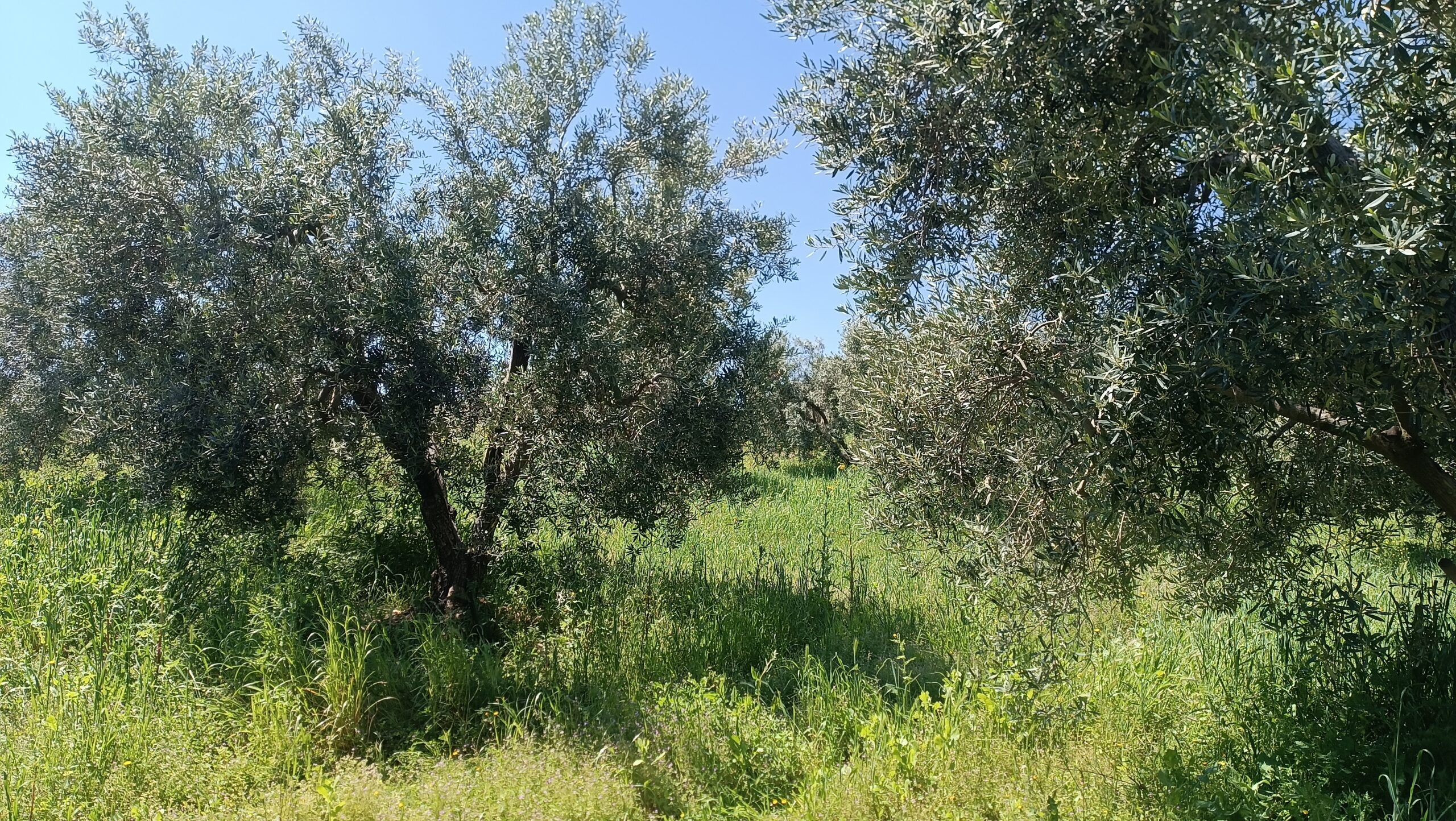
“Consider that this April we had unprecedented rains that simply wouldn’t stop. The tree did need them, and we weren’t at a stage when they would harm it, it was to its benefit. We don’t know, however, how the situation will develop, because we remember that last April, in the Municipality of Nea Propontida, adjacent to the Municipality of Polygyros, there was a hailstorm that lasted 17 minutes and destroyed everything,” he adds.
For the olive grower, what matters with the olive is the differentiation of the buds, the point at which the tree decides whether it will produce fruit or vegetation. “Temperatures play an important role, and if they are not favorable they do not help the tree’s predetermination to proceed, it believes that it is still spring and continues only to put out shoots,” he explains.
The summer of 2024, with particularly high temperatures and prolonged droughts, caused the most disheartening image to date in growers’ olive groves. May, as they say, felt like late June, and the ground didn’t even sprout. To save the crop, olive growers were already irrigating their irrigated orchards from April, while the search for water drove existing boreholes to unprecedented depths.
“As with most tree crops, the main consequences of the climate crisis for the olive are reduced production due to high winter temperatures that do not allow the olive tree to accumulate chill units, limited water availability, and extreme temperatures during the sensitive stage of pollination (spring flowering, fertilization, fruit set), as well as impacts on the quality of olive oil and table olives. Losses in olive production are already evident, and models even predict complete loss of production in certain regions of the country (eastern Crete, the southern mainland, and elsewhere),” points out Vasilis Gkisakis, agronomist and appointed researcher at ELGO-Dimitra, speaking to Alterthess. Asked whether the fact that Central Macedonia is warming, according to climate scientists, at a faster rate than the rest of Greece makes the problem more intense, he replies: “Indeed, inland areas show a greater increase in temperature compared to southern coastal agricultural lands. However, there are no available models that demonstrate greater intensity of climate pressures in Central Macedonia, at least not in comparison with the southern olive-growing regions, which are already strongly affected.”
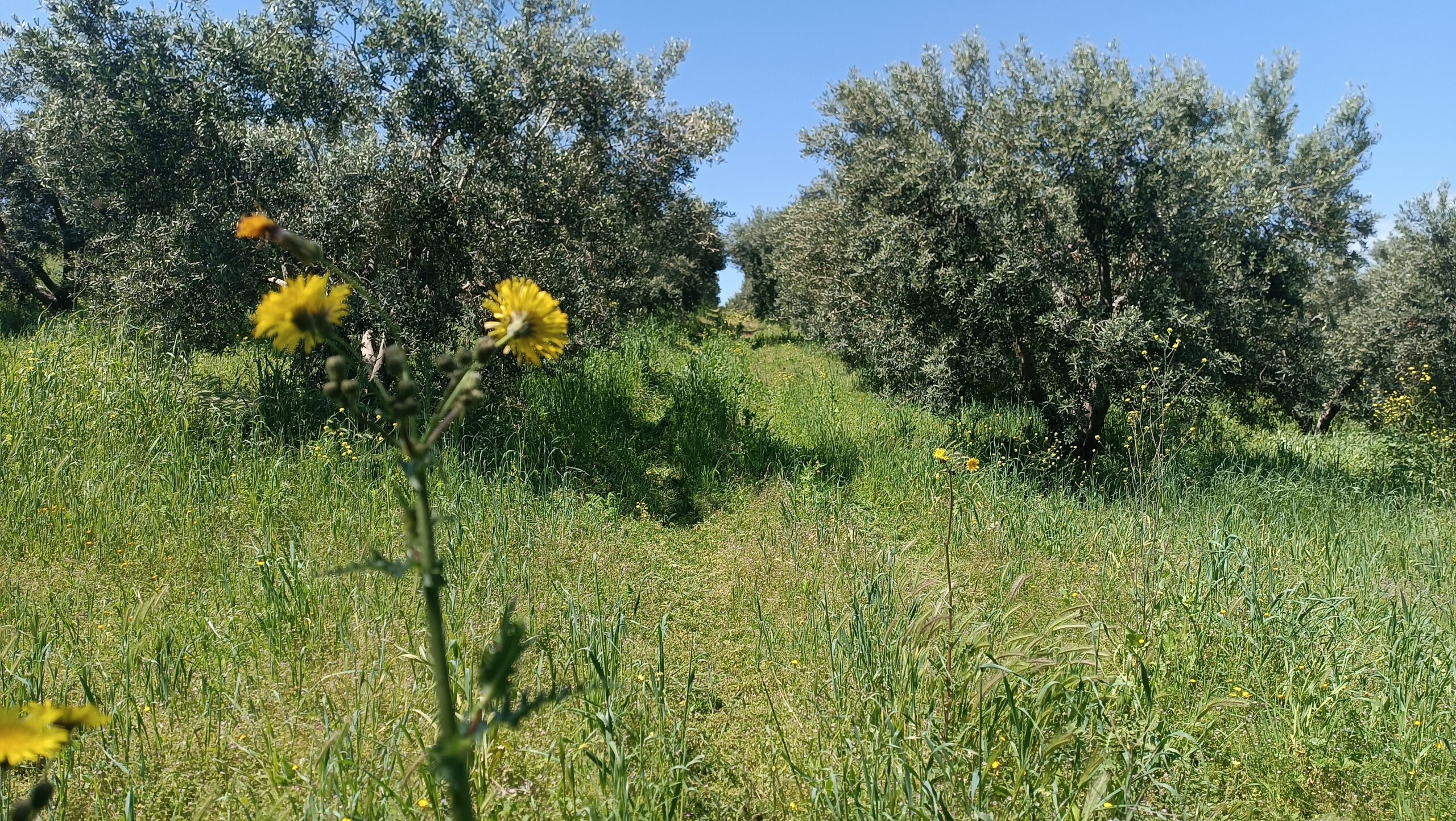
Organic farming comes from the future
Through our discussion with Evangelinos, we tried to examine which practices lead to the deterioration of soil conditions and what led him and the other cooperators to turn to organic cultivation.
“For the organic farmer, the first priority is the soil. He cares for the soil, nourishes the soil that nourishes the trees,” emphasizes Evangelinos. Conventional agriculture, he says, has rendered the soil barren. As a result, organic matter has fallen from 3.5% to 0.8%.
“The organic farmer comes to overturn this situation by leaving the weeds, which will provide organic matter through the decomposition of plant biomass. There is a reciprocal relationship between the crop and the weeds: they supply elements to the tree, they take from the tree, and then return them with mowing.” In addition, with this practice, the olive’s enemies occupy themselves with the vegetation (weeds) and not with the olive. “What we heard in theory, we put into practice. They used to say that organic farming is difficult; we find quite the opposite,” he adds.
Organic cultivation, that is not using chemical fertilizers, chemical pesticides, and herbicides, requires continuous monitoring of the trees and the condition of the soil. Organic farmers intervene, when necessary, with natural products to combat the olive’s enemies, constantly counting their populations.
Evangelinos points out that organic farming focuses on the soil, something that did not happen in previous years. “Olive groves, as they were cultivated in the 1980s, have nothing to do with organic farming. Back then, fertilizers were applied recklessly, which paid off for a time but created diseases, because we’re talking about a monoculture of olives in the area, which has disadvantages anyway. If a fungus or pathogen enters the root, it spreads at the speed of light,” he continues, saying that “what was done was monstrous, the use of chemical fertilizers and heavy pesticides left high residues in the fruit, yet these are gradually being phased out. Organic farming is a new trend where your first priority is the soil. You see a patient and you try to make him better than he was before.”
But what does organic cultivation have to do with addressing climate change and reversing agriculture’s contribution to the climate phenomenon? How important is it to deal with this issue in a world being destroyed by multiple factors, with living conditions becoming ever more precarious?
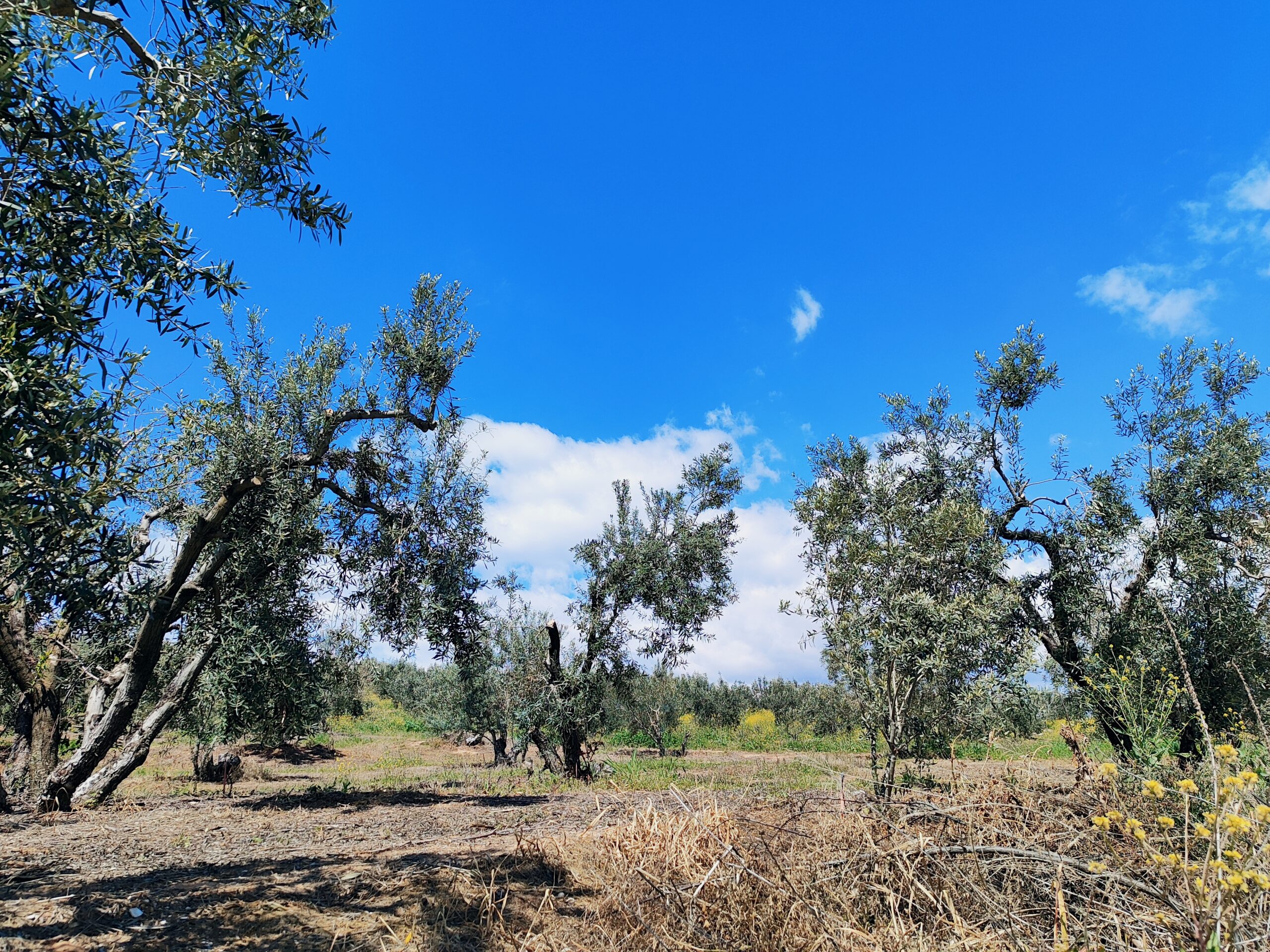
As agronomist-soil scientist Christos Tsantilas, former director of ELGO-Dimitra’s Institute of Industrial and Forage Crops, points out, “Climate change affects the very heart of human needs: food. We may reach a point where the problems will become uncontrollable. We are already seeing what is happening with, for example, migration. These populations moving from countries such as those in Africa, southern regions, or Asian countries are not moving only for geopolitical reasons. If one looks deeper, one sees that the deprivation these populations face is largely related to issues of climate change. The basic conditions for producing food do not exist, and people, seeking better living conditions, migrate, and then we have all these imbalances in the societies of the countries to which these people resort. So the issue becomes extremely complex and very difficult.”
For the olive grower we met with, the turn to organic farming became experientially connected with resilience to weather phenomena and the necessity of producing quality food. At the same time, such a practice leads to reducing agriculture’s contribution to the climate crisis. In the words of Gkisakis: “When gentle, agroecological practices are applied, such as minimizing soil tillage, ground cover/green manuring, increasing soil organic matter with compost, and the use of soil conditioners like biochar, then the carbon dioxide emissions balance of an olive grove is positive (it absorbs more than it emits). Research has shown that the traditional olive grove in Greece, and elsewhere, performs significantly better than intensively cultivated olive groves with high fertilizer input, insecticides, water, intensive soil management, etc. Consequently, there are significant advantages for the extensive, family-run olive grove, which could play an important role in limiting the causes of climate change, and olive growers should be supported accordingly.”
Nevertheless, according to Evangelinos, there has been no strategy on the part of the Greek state regarding the issue of climate change, nor regarding how to support olive growers. As he notes, the state did not even make use of the CAP 2023–2027 support mechanism.
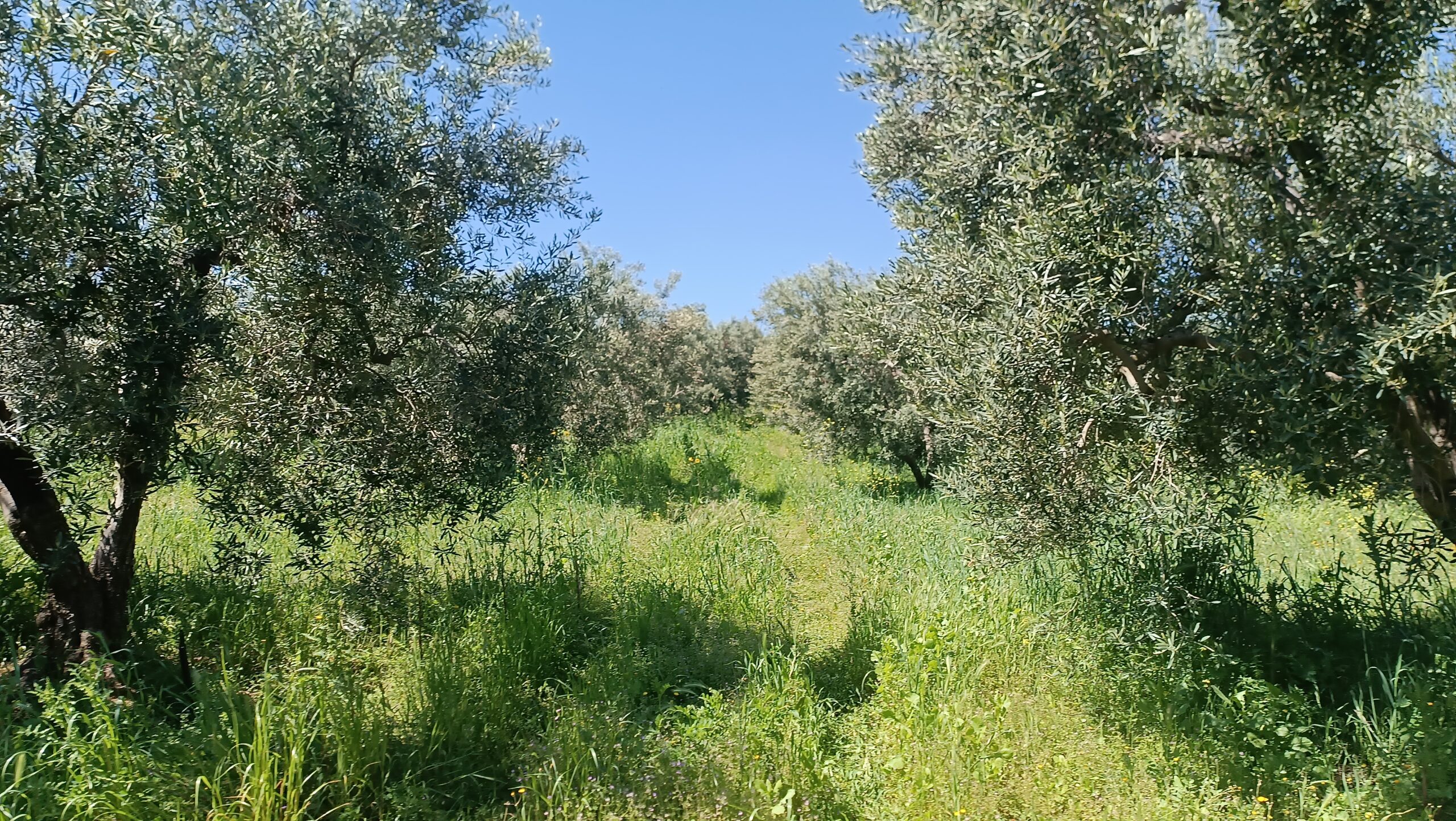
Let us not uproot the olive
According to a report on olive cultivation by the Focus Group of the European Innovation Partnership for Agriculture (2020), the Mediterranean Basin may be significantly affected by climate change. However, there are few studies focusing on analyzing the impacts on the olive, including the emergence of phytopathogenic pests and diseases that attack this crop.
In the absence of clear studies and data, forecasts indicate that areas suitable for olive cultivation are expected to expand further north and to higher-altitude regions. Is this an appropriate way to address the problem?
“It is said that due to climate change, the olive, and specifically the Chalkidiki variety, will move further north. This tree has adaptability. It has withstood centuries,” comments Evangelinos, emphasizing, however, that xerothermic conditions like those of the summer of 2024 were impossible to manage. Even so, the tree endured.
Soil scientist Tsantilas is unequivocally opposed to removing olive trees from cultivated areas. Regardless of whether olive cultivation is strained by the climate, he says, it would be wrong to replace or exclude it.
“Consider that in Greece the olive has been cultivated since Greece has existed. There are olive trees in Crete that are 3,000 years old and still producing. You understand, then, that over 3,000 years the climate has never been stable,” he notes.
The tree manages “because it has a physiological mechanism within it that does the following: when conditions of water scarcity and high temperature prevail, it reduces its growth; it does not produce large above-ground vegetation, but uses all the limited possibilities it has to develop its root system, which can reach up to 50 meters away, where it can find water.”
Therefore, he concludes, “the replacement of the olive, under this logic of crop restructuring that is said to be necessary due to climate change, must be done with great, great caution. In my view, nowhere, absolutely nowhere, even if production decreases, should we uproot the olive. Because if we uproot the olive and plant anything else, that will withstand far less than the olive does.”
He proposes measures to address reduced rainfall and to retain/store water. Specifically, he emphasizes: “When we say that rainfall has decreased, this does not mean that it doesn’t rain at all throughout the year. Therefore, if we take measures so that the water that falls in winter is stored within the soil, through simple actions, with terraces in sloping areas or with small embankments that we make on the uphill side of the tree so that winter rainwater collects, gathers, and percolates into deeper layers, then, with simple practices, production will be reduced, but there will be a production that is tolerable, that will provide some income.”
How farmers and agricultural cooperatives in the country should proceed in demanding measures to address the climate crisis is summarized by V. Gkisakis:
“Adopt agroecological approaches that, beyond ecological farming practices, include a very broad set of socio-economic, sustainable models with key words such as cooperation, food sovereignty and self-sufficiency, social ecology, and degrowth, with the aim of a total transformation of agriculture in a way that is truly sustainable and just.”
Up next: Imathia Peaches: Seeking balance in the era of extreme weather
The research “The Climate was already bad” was realised with the support of Rosa Luxemburg Stiftung-Office in Greece. Read the complete research here.
